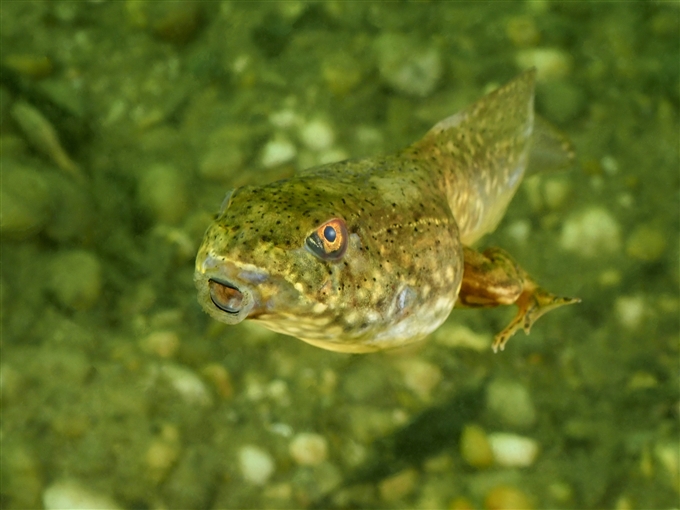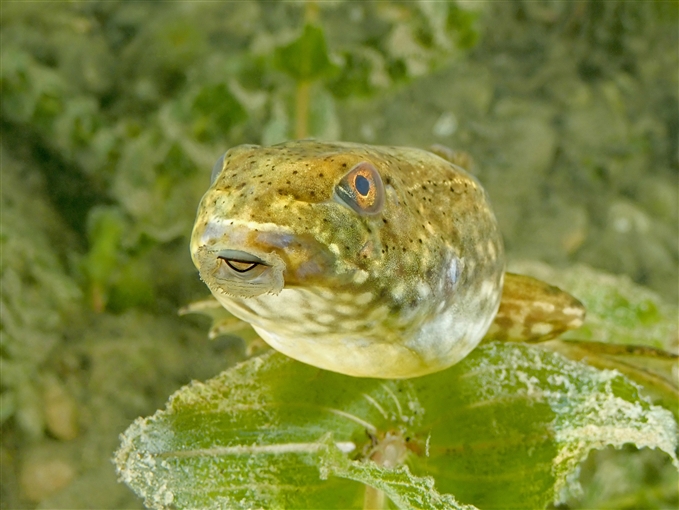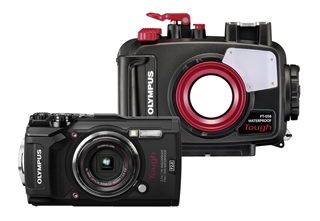We do not really know for sure, but rumor has it must have been in the early 90s when a bullfrog farmer in the Karlsruhe area in Germany could not or did not want to accept the authorities' requirements. So, one night he released all the animals and set them free to explore the surrounding quarry ponds – an act with unimaginable consequences.

Herbert Frei • Tough TG-5 • Flash diffuser FD-1
Bullfrogs originate from North America, where they are decimated by alligators and big snakes. In Germany, however, they do not have natural enemies. Even predatory fish spurn the amphibious immigrants. In any case, no other animal has been able to decimate the bullfrog populations.
Bullfrogs can weigh up to over 2 kg, they can jump as far as 6 meters and easily jump 2-meter-high fences. Their appetite is huge and almost insatiable. They eat up everything coming their way and they can devour with their huge mouth. Mice, rats, snakes, small water birds, other amphibians and also fish. The latter they overwhelm at the shoreline in shallow water, where they lie in wait and simply suck the fish in as they swim by.

Herbert Frei • Tough TG-5 • Flash diffuser FD-1
Since bullfrogs are enormously fertile and let their spawn bales float in the open water, the eradication of the unloved strangers is beyond question. Bullfrogs often wander many kilometers across the land and colonize other waters in this way. Biologists already consider the fight against the invaders lost. Since the adult bullfrogs are very shy and, if at all, can only be caught at night, the volunteer helpers focused on the tadpoles. These grow up to be true giants. They grow up to 19 cm tall, maybe even bigger. While photographing the adult animals can cause unforeseen problems, you can occasionally take sensational snapshots of the tadpoles, although they are also rare. This is mainly because the tadpoles are extremely quick and can see very well. They notice the divers already from a few meters away visually and also through the water pressure, which is, among other things, caused by fin movements of the divers. Fleeing bullfrog tadpoles develop a speed equal to fish. The only chance you have: You follow them over long distances, at some point they will get tired. But that does not always work. If they disappear between water plants, the game is over and you have lost the hunt.

Herbert Frei • Tough TG-5 • Flash diffuser FD-1
When photographing bullfrog tadpoles, I bet on the Olympus TG-5. The quick amphibians cannot always be captured by the AF of the mirrorless system cameras, because it is too slow. The naked TG-5 equipped with the flash diffuser FD-1 is, in many cases, just the right answer in the extreme close range. Also, you may take the TG-5 with the fisheye converter - which by the ways allows the best zoom - and illuminate the photo with an LED light. If you use the TG-5 in the PT-058 UW housing, the amphibious flash UFL-3 is essential. Due to the large depth of field thanks to the small 1 / 2.3 inch image sensor you can confidently work with the program automation and ISO 200. If possible with JPEG + RAW.

Herbert Frei • Tough TG-5 • Flash diffuser FD-1
Many demanding underwater photographers shy away from working with a compact camera because they fear loss of quality. It is clear that the image quality of the TG-5 cannot be compared with that of an O-MD E-M1 MK II.
But that is not a determining criterion. The advantage of the TG-5 lies in its handiness, the incomparable robustness, its speed of operation and the possibility to celebrate extreme close-ups. It is often used one-handed and kept in a practical position with the floating loop CHS-09. This way, you are faster and can maneuver more easily than with a large UW housing.
In the special case of photographing bullfrog tadpoles, it is definitely superior to other photo equipment.

Tough TG-5 • Underwater housing PT-058
Comments
Show more comments (3)